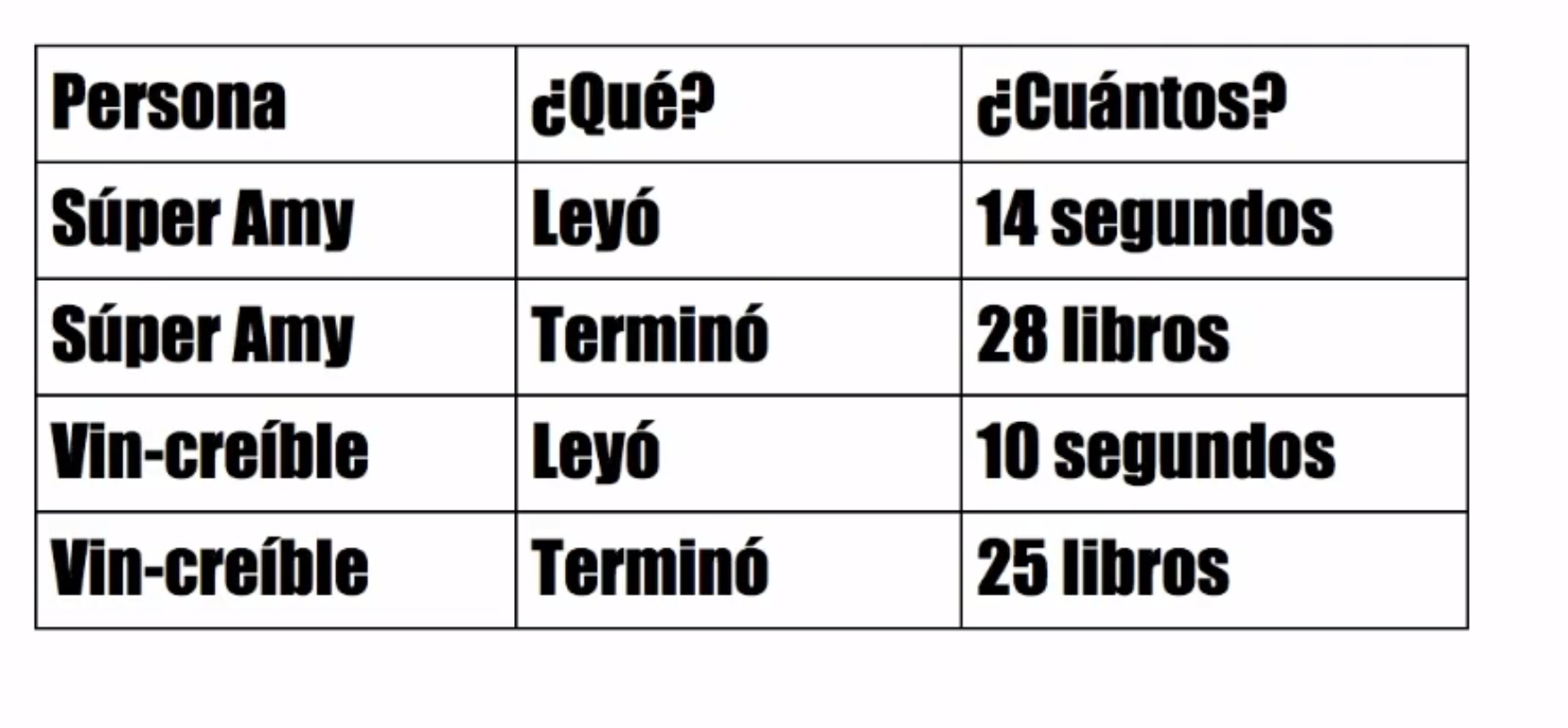You might be wondering how a study on teaching math in Japan led me to change how I make bilingual math games in Spanish and English. Alright, well, to be honest, you probably weren’t wondering about that at all, were you? You were probably thinking about if you need to call the plumber about that toilet that keeps running or which kid has soccer practice at 9 a.m. on Saturday. NOW, you’re wondering, though, aren’t you?
Several years ago, I was reading a book on improving mathematics instruction. The author visited a school in Japan and observed all of the second grade teachers get together and have an entire professional development session on ONE problem they would be using as an example in teaching, I think it was subtraction. They discussed the exact wording and whether using two even numbers made it less confusing.
Which brings us to this video
When we were translating this video into Spanish for our upcoming game, Siglo de Cambio, I was bothered by the example given of a table.

Let it be noted that I did not do this math video originally. If you were doing this in Excel or similar program “Leyó” , the time that each had read, would be in one column and “Terminó”, how many books each finished, would be a different column. So, I re-did the table so the dividend was in one column and the divisor in the next, like so:

It took some time to change the table in both videos, swap out the English version in Making Camp Premium and the Spanish version in our upcoming Siglo de Cambio game, then go on our youtube channel in Spanish (Strong Mind Studios) and and our channel in English, delete the old video and replace it with the new ones.
It didn’t take all day, but it didn’t take five minutes, either, and being a small company we are all super-swamped with work.
Devoting that degree of attention to each and every problem matters, and it is not something teachers have time to do
Some days, it’s not something we have time to do, either, but we keep working at making our games better every day. If you haven’t seen our software in a year or two, you haven’t seen it.
It’s these incremental changes that add up. I do get frustrated sometimes because there are so many improvements I want to make, but when I look at the quality of our games now, our expansion from Mac and Windows to games on Chromebook, Android, iPad and even a couple on iPhone, it’s encouraging. When I look at how our content for math, history and language has grown in quantity and quality, it’s worth all the sweat, tears, swearing, time and money.
